Is your impression of China still in the 1980s? The main means of transportation are bicycles, the communication is mainly by writing letters, and the styles of clothes worn by people are also similar. Now that it’s the 21st century, would you like to see what China will look like in 2022? If yes, this China tours 2022 will be your best choice. You will take the high-speed rail at a speed of 350km/h, climb the 468-meter-high Shanghai Oriental Pearl TV Tower, and visit a commercial street with a daily passenger flow of 800,000 people – Shanghai Nanjing Road. In addition to experiencing the current prosperity of Chinese cities, you will not miss the must-see attractions in the Beijing tour 2022- the Great Wall and the Forbidden City as well as in the Hong Kong tour 2022 – Lantau Island and Victoria Peak. Contact us and make your China tour happen.

Welcome to Beijing! When you arrive at Beijing Capital or Daxing International Airport, you will see our guide waiting for you with a name sign in the hand. After the business with the airport is done, the guide will take you to the parking lot where you will meet our driver who will be responsible for the next several days during the trip in Beijing. The driver will, accompanied by the guide, drive you to the hotel.
Beijing, also known as Peking, is the capital of China. With a 3,000-year history, it is also one of the ancient capitals of China. In Chinese, the literal meaning of “Beijing” is “Northern Capital”. As the capital, Beijing now is the political, cultural and economic centre of China. FYI, the climate of Beijing is very dry, so for tourists who stayed in humid weather most of the time, it will be a wise choice to bring some moisturizer.
Our journey begins with Tian’anmen Square. Our driver will pick you up at the hotel after breakfast. Located at the centre of the city and named eponymously with the Tian’anmen Gate Tower which is on the north of the square, the square has significant cultural and historical meanings for the Chinese nation. On 1st October, 1949, Chairman Mao Zedong proclaimed the establishment of the People’s Republic of China on the Tian’anmen Gate Tower. The square contains, from north to south, the flagpole, the Monument to the People’s Heroes, Chairman Mao Zedong Memorial Hall, and Zhengyangmen Tower which are all on the central axis of Beijing. Every morning, the flag-raising ceremony is held in the square and if you are interested in the activity, you may consult the guide for details.
To the north of Tian’anmen Square is the Forbidden City (closed each Monday) and the two places are separated by the Tian’anmen Gate Tower. Used as the royal palace in the Ming(1368 - 1644) and Qing Dynasties (1363 - 1912), the extent of its lavishness and extravagance is hard to imagine and you would not believe it without visiting in person. There are more than 9,000 rooms distributed in about 70 halls and palaces. At first, Zhu Di, one of the emperors of the Ming Dynasty and who made the Forbidden City built, wanted to build 10,000 rooms at first. The ancient Chinese believed that there was also a palace in the sky for the Jade Emperor(the first god in Chinese myth). Legend has it that the palace of the Jade Emperor has 10,000 rooms. Emperor Zhu Di changed his mind after his officer had a dream in which the officer was reprimanded by Jade Emperor for not showing respect to him with 10,000 rooms constructed. As a result, the rooms in the Forbidden City are less than 10,000.
We will have lunch at a local restaurant. After that, we will visit the Summer Palace. In the Qing Dynasty, it was an imperial garden and civilians were not allowed to enter. Built based on the Kunming Lake and Longevity Hill, it contains eight major parts and each of them comprises several attractions with diverse features. There is, for example, a famous bridge named Seventeen-Arch Bridge which suspends over the Kunming Lake. It consists of 17 bridge openings. On each side of the rail, there are 500 stone lions that are different in size and distinctive in features. With a length of 728 meters, the Long Corridor between the Longevity Hill and the Kunming Lake was listed in Guinness World Records in 1992 as the longest corridor in the world.
After that we will visit Silk Street where you can enjoy a shopping feast! As one of the earliest free markets and with the most famous business brands of China, it developed with the Reform and Opening-up policy for more than 40 years. Many international celebrities have been here for shopping and sightseeing. For instance, in August 2008, Dr. Annie Rogge, wife of Mr. Jacques Rogge, Honorary Chairman of International Olympic Committee, bought a pair of customized coloured dough figurines which were in her granddaughter and grandson’s figures respectively. What is more interesting is that the artisan made a pair of dough figurines in the couple’s figures as a surprising gift.
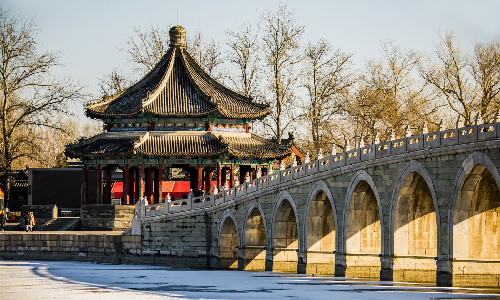
In the morning we are going to the Ding Tomb, one of the Ming Tombs. It locates at the south piedmont of Tianshou Hill, Changping District, the northwest suburb of Beijing and about 50 kilometres away from the city centre. It will take us 1.5 hours to get there. The Ming Tombs are a collection of mausoleums built by the emperors of the Ming Dynasty (1368 - 1644). Since the construction started in May 1409, 13 emperor mausoleums, 7 concubine mausoleums and 1 eunuch tomb were built within the next 230 years.
The Ding Tomb, the one we will visit, is the mausoleum of Zhu Junyi, the thirteenth emperor of the Ming Dynasty, and his two empresses. Taking up 180,000 square meters, it is among one of the three largest tombs of the Ming Tombs. In terms of the layout, the tomb has a square front part and a round rear part, which implies the ancient Chinese philosophy – the sky is round and earth is square. Many precious cultural relics were excavated from the Ding Tomb, all of which mirrors the prosperity of that time and the extravagance of the imperial family.
After lunch, we will drive northwest for about 40 minutes and then arrive at our next station – Badaling Great Wall which is 37 kilometres away from the Ding Tomb. Since the construction started in 1505 (Ming Dynasty), it lasted for about 80 years. The Badaling Great Wall locates at the north entrance of Guangou Ancient Path and is called “one of the nine fortresses of ancient China”. In the Ming Dynasty, it was a significant military fort and the barrier of Beijing. The great wall contains several attractions, including the Wangjing Stone, the Tanqin Valley, and the ancient artilleries.
On the way back to your hotel, we will have a photo stop at Bird’s Nest and Water Cube, the venues for the 2008 Olympic Games. You will surely be amazed by their spectacular appearance.
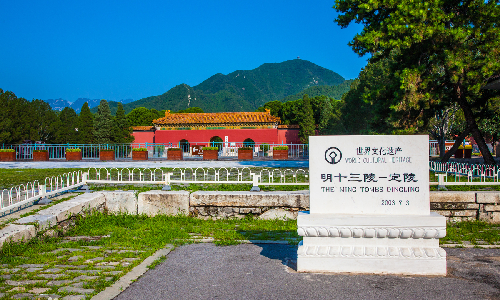

In the morning we will visit the Temple of Heaven. It was the place for the emperors in the Ming and Qing Dynasties to worship heaven and pray for good harvests. The layout of the temple is full of philosophical thoughts. The square wall of the front part refers to the land while the round wall of rear part refers to the sky, according to the theories of Daoism, sky is round and earth is square. The major attractions include the Circular Mound Altar, the Sacrifice Pavilion, the Imperial Vault of Heaven, Red Throne Steps Bridge, the Hall of Prayer for a Good Harvest, the China Rose Garden and the Fasting Palace. Nowadays, in the morning there are many people practicing Tai Chi in the Temple of Heaven.
Next, you will go to visit Hutong, which is originated from the Yuan Dynasty (1271 - 1368). The name “hutong” is the transliteration of “well” in Mongolian. Hutong is an alley or a small street in old city area of Beijing. There were more than a thousand hutongs in the Ming Dynasty and when the new China was established that number reached 2,550 plus, according to the documents. Now there are more than 4,000 hutongs in Beijing. Hanging out among the hutongs has become part of daily life of the Beijing citizens. Here, you will take a rickshaw shuttling through hutongs, experiencing the daily life of Beijing civilians. We will visit a family living in the hutong where you will have close contact with the traditional Beijing lifestyle and the Chinese courtyard.
After lunch, Lama Temple is your next destination. The temple was built in 1694 in the Qing Dynasty and was bestowed to Yinzhen (the fourth son of the emperor and became the next emperor at the time) as his mansion house. Two emperors used to live in this house (Emperor Qianlong, the son of Emperor Yinzhen, was born here), which is so extraordinary that the colour of the glazed tiles of the major halls was changed from green into yellow (which is the symbolic colour of emperors). In the ninth year of the reign of Emperor Qianlong (1744), the mansion was converted into a lama temple and became the Buddhist temple of the highest specification in the mid and late Qing Dynasty. In 1983, the temple was recognized as a key temple in Han nationality area by the State Council of China. It consists of three exquisitely decorated archways and five majestic halls, including more than 1,000 rooms. Besides, there are varieties of rare Buddhist treasures, such as the bronze Sumeru and the huge sandalwood Maitreya Buddha.
Just walk west for about 5 minutes along Guozijian Street, you will arrive at Confucian Temple, the last attraction of today. The Confucian Temple of Beijing used to be a place to worship Confucius in the Yuan, Ming and Qing Dynasties (1271 - 1912). The temple adopts the traditional Chinese axisymmetric layout and contains three courtyards. On the central axis are Xianshi Gate, Dacheng Gate, Dacheng Hall, Chongsheng Gate and Chongsheng Ancestral Hall in sequence from north to south. The major buildings all use yellow glazed tiles as their roofs.


There is no arranged schedule today. You may explore the city as you wish.
Free time Suggestion:
Wangfujing Street is a great choice for leisure time. This is the paradise for people who love shopping. All kinds of merchandise and brands, ranging from traditional Chinese handmade goods to the most fashion luxury brands, huddle here. You can get there either by Metro Line 1 or by bus 103, 104, 108, or 111.
 Shanghai
Shanghai Today you will take the estimated high-speed train G7 10:00/14:28 to Shanghai. Our driver will pick you up at the hotel, and our guide will meet you at the railway station in Shanghai and take you to the hotel. The guide in Beijing will prepare a box lunch (including a sandwich and a piece of fruit) for everyone before leaving for in case that if anyone does not enjoy the food on the train.
In the morning, we will visit Jade Buddha Temple first. The temple enshrines two jade buddhas and this is the reason why it is so called. Both of the jade buddhas were carved from the jade collected from the mountains in Burma by Huigen, a famous monk in the Qing Dynasty. One of the buddhas is a seated buddha of Sakyamuni. It is now exhibited at the Jade Buddha Hall, one of the major buildings of the temple. It is interesting to know that this temple has a unique history. Most of the temples finish their construction work first and then invite buddhas, while the sequence of Jade Buddha Temple is the opposite – it obtained the jade buddhas first and then the temple was built in order to enshrine the buddhas.
After that we will go to Yu Garden (closed each Monday). In the Ming Dynasty, this is a private garden of Pan Yunduan, an officer at that time. The construction began in 1599 and was not completed until 20 years later. There are 6 main scenic areas in the garden, including more than 40 buildings in the traditional Chinese style. The garden also has a collection of precious cultural relics, for instance, varieties of brick carvings, stone carvings and wood carvings, as well as clay sculptures, paintings, furniture, and porcelains created by great masters.
The first stop after lunch will be Shanghai Oriental Pearl TV Tower. It is one of the significant cultural landmarks of Shanghai. It took about 4 years to turn the blueprint into a grandiose tower which now works efficiently. Featured by the three sphere structures – a topmost sphere, an upper sphere, and a lower sphere, the tower becomes the place where tourists may overlook the city on the sightseeing platform, and learn the Shanghai’s history of development at the exhibition centre. It could be said that visiting the tower is both recreational and educational.
After that we will go to the other side of the Huangpu River to visit the Bund. There is an exotic building cluster containing 52 classical Renaissance edifices with different architecture styles. The cluster has become one of the important landmarks of Shanghai. You could have a walk along the bund and enjoy the classic buildings as well as the river view.
Nanjing Road, not far from the Bund, is one of the ten great business centres of Shanghai. Here not only can you find fancy shopping malls and fashion luxury brands, but also there are many specialty shops, such as the food shop named Laodafang which is famous for smoked fish and pork mooncakes, Zhangxiaoquan whose scissors are the best, and Duoyunxuan with traditional Chinese drawings and writings.
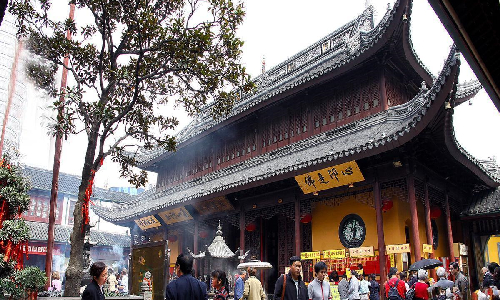
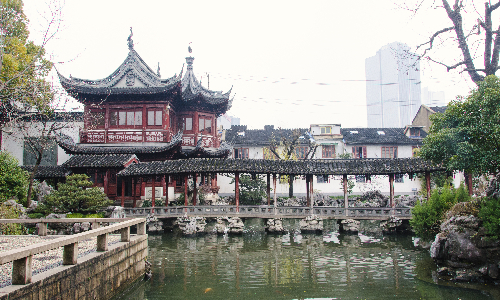
 Suzhou
Suzhou Shanghai
Shanghai Today we will go to Suzhou. Suzhou is 115 kilometres northwest away from Shanghai and it will take us about 2 hours to drive there. Tiger Hill will be our first destination. It was called “the first attraction in Suzhou”. The Tiger Hill contains mainly three part: the front hill area, the Thousand People Stone area and the hilltop area. Among all the spots, the Thousand People Stone and the Sword Pool are the must-see ones that you mustn’t miss!
After lunch we are going to Shantang Street. Shantang Street is one of the busiest and most thriving places of Suzhou. In 825, Bai Juyi, a famous poet, was appointed to govern Suzhou. He ordered to dredge the river courses northwest outside the Suzhou City and excavate a river based on the natural rivers. The excavated river was named Shantang River and the street was named after the eponymous river. The ancient stone bridges here make the street distinguished – seven spanning the Shantang River, eight on the river levee and the other 8 on the other side of the river, four (Shantang Bridge, Caiyun Bridge, Bianshan Bridge and Dong Bridge) of which have a history of more than 1,000 years! You can step on them and overlook the ancient street.
The last spot of today is Humble Administrator’s Garden. The magnificent garden was built in 1506 (the Ming Dynasty) and now it is among the Four Great Gardens of China. Built around ponds, the garden is distinguished from other ancient Chinese gardens due to the unique layout. Divided into three parts, the garden includes eastern, middle and western gardens. The eastern garden is the biggest, the middle garden is the essence of the Humble Administrator’s Garden, and the western garden has the most exquisite buildings. The southern part is the living quarters and now the Suzhou Garden Museum is built in the area.
After visiting, we will drive you back to the hotel in Shanghai.


In the morning we will visit Zhujiajiao Ancient Water Town. It is 45 kilometres southwest of Shanghai and it will take us about 1 hour to drive there. Despite its 1,700-year history, the Zhujiajiao Ancient Water Town is the best-preserved one among the four ancient towns in Shanghai. Several rivers go across the town and nine long streets and roads spread along the rivers. No wonder the town gained the fame of the “Venice of Shanghai”! Take a boat tour (covered by the journey) and enjoy the tranquil atmosphere created by the thousands of ancient buildings by the rivers. What a cosy day!
After lunch we will drive you to Tianzifang Street and then it’s your free time. Tianzifang Street is an artsy area that is full of bars, cafes, crafts shops, design studios, galleries and boutiques. At the same time, the place, however, still preserves many old residential architectures where even the green letter boxes – the typical decoration style of 1980s China – are still in use. The combination of art and life makes it distinctive among all the walking streets.
At last, we will drive you back to your hotel at the end of the day.

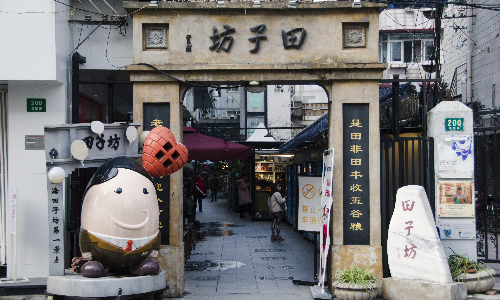
 Hong Kong
Hong Kong In the morning our driver will take you to the airport. You will take the estimated flight HX237 11:55/14:45 to Hong Kong. There will be a guide to welcome you at the airport and you will be driven to the hotel.
Today we will visit Lantau Island and will stay there for about 7 hours. Located west of Kowloon Peninsula and Hong Kong Island, Lantau Island is 30 kilometres away from the city centre and it will take us about 40 minutes to drive there. The driver will drop us at Tung Chung cable car station and then we will arrive at the mountaintop by Ngong Ping 360 Cable Cars, one of the featured items of the Lantau Island.
The first we will visit after getting off the cable car is Big Buddha. The Big Buddha is located at the Muyu Peak of Lantau Island. As the biggest open-air bronze seated Buddha in the world, it is made of 202 pieces of welded bronze and 250 tons in weight. Built in the early 1990s, the Buddha has a height of 23 meters and the total height along with the lotus seat and the base is about 34 meters.
Behind the Big Buddha is the Po lin Monastery. The major buildings of the monastery include the Great Buddha Hall, the Maitreya Hall, the Hall of Ti-tsang Bodhisattva, the Weituo Hall, the Banruo Hall and the Sutra-Collection Hall.
After the visits, you can enjoy the rest of the day by yourself.
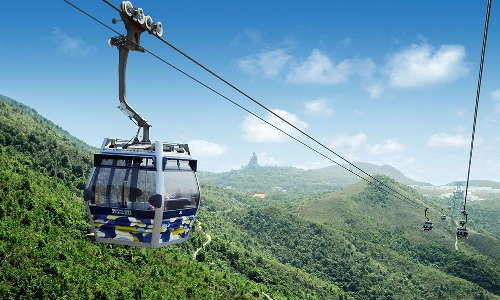

In the morning we will go to Victoria Peak. To get on the top, you will take the Peak Tram. Here is the perfect spot to appreciate the splendid scenery over the well-known Victoria Harbour. Whether you want to have a meal on the peak, hike in the wooded paths or go shopping in souvenir malls, you will always find something you are really interested in.
The next station is Aberdeen Fishing Village which is at the southern end of Hong Kong Island. The Chinese Junks here have gained a good reputation in the world. Here you will take a sampan ride to experience the fishermen’s live.
After that we are going to Repulse Bay. The Repulse Bay is in the south of Victoria Peak of the Hong Kong Island. With the shape of the new moon, the bay is called “the first bay in the world” and also has the fame of the “Eastern Hawaii”. You could lie down on the beach and enjoy the sunshine here.
After the trip at the Repulse Bay, we will take you back to the hotel and after that you can arrange the day as you wish.


There is no schedule for today. We will pick you up at the hotel and drive you to the airport in accordance with your flight time. Wish you a pleasant journey!
Editor: Zhou Rui
Proofreader: Summer Hou
| City | Five Star hotel list | Four Star hotel list |
|---|---|---|
| Beijing | Sunworld Dynasty Hotel Beijing Wangfujing | Sunworld Hotel Wangfujing |
| Shanghai | Ocean Hotel Shanghai | Courtyard by Marriott Shanghai Central |
| Hong Kong | Harbour Grand Kowloon | Harbour Plaza North Point Hotel |
 |
![]() About your child or infant, please contact us for a discounted price.
About your child or infant, please contact us for a discounted price.



We started with a few days in Beijing & ended in Shanghai, from where we visited the Forbidden City and Great Wall. In between we visited Terra Cotta Warriors Museum, Panda Base, Shanghai Disneyland.

We had a wonderful holiday in China which will remain long in the memory. China is a breathtakingly beautiful country full of splendid temples and palaces, mountains and rivers, peaceful rural scenes and bustling shopping streets.
 QUICK ENQUIRY
QUICK ENQUIRY